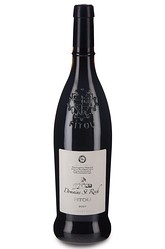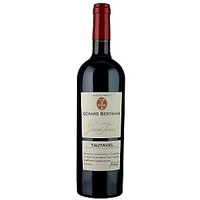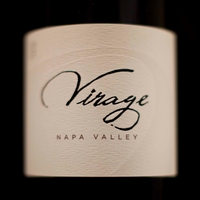|
|
 |
|
October 27, 2010
We shall require a substantially new way of thinking if mankind is to survive.
--Albert Einstein
I’m pretty sure these are the only dishwasher-safe shoes I’ve ever owned. I didn’t even know about this particular virtue when I received a pair of Okabashi clogs as a gift from a PR firm, but being able to throw shoes in with the dirty dishes does seem like a pretty attractive concept, in a two-birds-with-one-stone sort of way. In truth I didn’t quite understand why a person who writes about wine was being sent a pair of shoes, but as it turns out there is a common link between the Okabashis and my favorite beverage, and that link is the color green.
There’s little doubt that the quest for greater environmental responsibility is having an increasing effect on the wine industry, and I guess maybe on a certain segment of the shoe business as well. On the day I took my new shoes out for their first walkabout, I happened to read an article in the business section of the New York Times about the greening of Champagne bottles (“A Greener Champagne Bottle,” Liz Alderman, September 1, 2010). In it, Thierry Gasco, master vintner for Pommery, was quoted as saying: “We’re remaking the future of Champagne…so our carbon footprint will be reduced to keep Champagne here for future generations.” The main focus in today’s Champagne campaign, he explained, is to reduce the amount of glass in its notoriously hefty bottles by 65 grams (2.3 ounces). All Champagne houses are expected to be using the newly svelte bottles by next April. According to the Times article, reducing the amount of glass lowers the carbon emissions necessary to make each bottle by 7 percent, which allows about 2,400 more bottles to be placed inside delivery trucks (thereby reducing the number of trucks on the road).
Apparently there are still some climate-change skeptics in the wine industry, but by and large vintners across the globe are particularly attuned to the urgent need for lowering carbon emissions. “We are the canaries in the coal mine,” says Paul Dolan (Parducci Wine Cellars and Paul Dolan Wine). “I think we’ve been more observant of climate change because of the sensitivity of vines to terroir.” Trimming excess weight from bottles is only part of the story of course, but there’s no doubt it’s a good step to take. (Note to wineries who still have the idea that consumers think an ultra-heavy bottle equals high quality wine: we don’t. What we actually think is: “Ouch! I just got a whiplash picking up that stupid overweight bottle!”) Wineries are embarking on a host of other efforts to reduce their carbon footprint, from retrofitting the winemaking facility to embarking on greener viticultural practices, and if Okabashi is any indication, shoemakers are following suit.
My new shoes are made from recyclable materials and are themselves 100% recyclable; they’re manufactured in the USA, which means a reduction in carbon emissions to transport them, and of course they’re washable. And by the way, at $14 they’re very affordable. I think I’ll slip them on right now and raise a glass of Champagne to toast new ways of thinking.
Posted by Marguerite Thomas at 10:26 AM
|
|
October 17, 2010
Those who follow the wine trade are well aware that the winds of fortune have not been blowing in a favorable direction for Australia during the past few years, and part of the problem is that big, powerful Shiraz has ceased to be surprising or interesting to a fair number of people who once found it surprising and interesting.
I confess that I am occasionally one of those people, and that recently I have sometimes wondered if I don’t feel about Aussie Shiraz roughly as I feel about California Zinfandel: It can be impressive in its way, but it is just too much, rather like a dinner companion who talks too much and too loudly. too loudly.
Big Aussie Shiraz is often just too pushy to work well with many dinner dishes. Some are so pushy that they only pair well with, say, wolverine. And one can only eat wolverine so many times each year.
But then, just when this notion was starting to harden into a conviction for me, I open a bottle of Shiraz that totally blows me away with its completely irresistible deliciousness.
The wine was from Penley Estate in South Australia’s Coonawarra district, which is famous for Cabernet but much less so for Shiraz,  which is more widely renowned in warmer regions like the Barossa Valley or McLaren Vale. A “Special Select” bottling called “The Traveller,” it was from the 2005 vintage, and rings up for a hefty price of $50 that seemed to me entirely justified after tasting the wine. which is more widely renowned in warmer regions like the Barossa Valley or McLaren Vale. A “Special Select” bottling called “The Traveller,” it was from the 2005 vintage, and rings up for a hefty price of $50 that seemed to me entirely justified after tasting the wine.
It is very big, weighing in at a stated 15% alcohol, and absolutely packed with deep, concentrated flavors of blackberries, black currants, and bing cherries, along with a firm lashing of oak that accentuates the spicy character of the fruit and provides some wood tannin to help structure the finish. Big but not just big, it shows enough acidity to seem pure and even fresh despite its ripeness, and the symmetry of fruit, acidity, sweetness, spice, tannin, and savory notes makes the wine interesting and appealing sip after sip.
I’m writing this on a Sunday, and they say confession is good for the soul, so here goes: I was strongly tempted to cut bait on Aussie Shiraz, but I was wrong. I just hadn’t risen to the right bait for too long. Penley Estate’s “The Traveller” has made a believer out of me once again. I scored the wine at 94 points, and will publish a review to that effect along with the other WRO reviews that will come up on the site this coming Wednesday. It is imported by Old Bridge Cellars, and is well worth a search.

Posted by Michael Franz at 12:24 PM
|
|
October 12, 2010
(Robert Whitley's Creators Syndicate Wine Talk column for this week.)
As a young wine enthusiast, sometime in the early 1970s, I took great pride in foraging the bargain bin to come up with superb wines that would impress my various wine mentors. In the day, the gems were likely to be relatively obscure Bordeaux, perhaps from an "off" vintage.
I can remember stocking several cases of Chateau Gloria, a cru bourgeois from Saint-Julien, because I loved the wine and the price was right, considerably less than $10 a bottle. I also bought the 1973 Chateau Mouton dirt-cheap because '73 was considered an "off" year.
 As world demand for Bordeaux expanded, prices soared and Bordeaux ceased to be a resource for value wines. So I explored the wines of Chile, though at the time Chilean wines were more about potential greatness than quality, which was spotty. As world demand for Bordeaux expanded, prices soared and Bordeaux ceased to be a resource for value wines. So I explored the wines of Chile, though at the time Chilean wines were more about potential greatness than quality, which was spotty.
Then came the Australian invasion, and we learned all about yummy Shiraz at startling prices due to a favorable exchange rate. Somewhere along the way, Argentina and Spain got into the game with dazzling wines that cost a pittance.
So what's next? Where in the world will eye-popping wines be made, which would sell for a fraction of the cost of a middling Napa Valley red wine? I submit the wines of Sud de France, specifically the Languedoc and Languedoc-Roussillon, have the potential to satisfy even the most demanding palates at prices that seem to be a throwback to a more fiscally serene era.
This region is well known already for its Vin de Pays d'Oc wines, somewhat of a dubious distinction. The Vin de Pays wines of the region are mass-produced creations that don't so much satisfy the palate as a price point. Many of the wines are produced in cooperatives that have typically stressed volume over quantity.
The existence of the Vin de Pays d'Oc wines has served to obscure the rich viticultural heritage of the south of France as well as the blossoming culture of family run estates that are now, finally, putting their historic vineyards to good use. The renaissance of the Languedoc and Languedoc-Roussillon goes back nearly two decades and is now in full swing.
Many of the finest vineyards of Grenache, Carignan, Mourvedre and Syrah are 80 years to 100 years old, with self-limiting low yields that translate to gorgeous aromas and flavors in the finished wines. The best of these are generally from AOC (Appellation d'origine controlee) villages, meaning the wines are made according to the protocols of the appellation.
 Prior to an upcoming visit to the Languedoc, I decided to taste a number of the wines from the region in advance. Prior to an upcoming visit to the Languedoc, I decided to taste a number of the wines from the region in advance.
This week's tasting notes are dedicated to the value gems that stood out.
One is a refreshing white, a Picpoul de Pinet, made from the Picpoul blanc grape. This is the wine most commonly served with oysters in the south of France. The other two are blends that rely heavily upon Grenache and Carignan, which are the money grapes of the western and southwestern Languedoc.
The reds of the region can often be robust, earthy and somewhat rustic, with prickly tannins that may take a few years to soften. The best, however, are nothing short of impressive, with interesting complexity, juicy red and black fruit aromas, and staying power.
I can't predict whether or not the wines of the Languedoc and Languedoc-Roussillon will become the next big wave, but I do know the ratio of price to quality is second to none in the world today.
(Click here to read the entire column and reviews.)
Posted by Robert Whitley at 11:38 AM
|
|
October 6, 2010
(Robert Whitley's Creators Syndicate Wine Talk column for this week.)
Emily Richer didn't arrive in the Napa Valley toting saddlebags loaded with gold bullion, as so many others have. Nor was she born to the grape, a child of the industry who took her first tentative steps in a vineyard. Nope, she's just a self-described Valley girl with a dream; a transplant from Los Angeles with a new wine business, a first vintage in the bottle and obstacles galore.
I tell you all of this for two reasons: I love the wine, the 2007 Virage; and I believe Richer is on to something, though success is far from assured.
 Richer is a former financial consultant who got her toes wet in the wine industry evaluating winery business plans, largely when the economy was booming and wine sales were on an upward trajectory as far as the eyes could see. She also graduated from culinary school and worked briefly as an assistant to Karen MacNeil, prominent wine educator and author. Richer is a former financial consultant who got her toes wet in the wine industry evaluating winery business plans, largely when the economy was booming and wine sales were on an upward trajectory as far as the eyes could see. She also graduated from culinary school and worked briefly as an assistant to Karen MacNeil, prominent wine educator and author.
So when she tasted the Havens Bourriquot and fell so in love with the wine that her imagination got the best of her, no one could say she didn't know what she was getting into when she created Virage. She had decided, against all conventional wisdom, to start a new venture in the Napa Valley at a time when the risks were greatest, and while eschewing the valley's money grape, Cabernet Sauvignon.
Virage was inspired by Bourriquot, which had been inspired by the legendary Chevel Blanc — perhaps the most revered chateau of Bordeaux's Right Bank. There is no Cabernet Sauvignon in the Cheval Blanc blend, for the soils and the climate of the Right Bank do not easily ripen Cabernet Sauvignon. The primary grape varieties of the Right Bank chateaux are Cabernet Franc and Merlot, grapes that are not widely planted in the Napa Valley.
There is a growing belief, however, among a small but important cabal of Napa vintners, that the southern end of the valley, in and around the Carneros District, is hospitable to the two much-maligned grapes.
Winemaker Aaron Pott, who consults for a number of wineries, most recently has championed the cause. Pott has vast experience with wines from the Right Bank, having served as winemaker at both Troplong Mondot and La Tour Figeac. Pott currently makes the tony Blackbird Vineyards wines that are mostly blends that mimic the Right Bank model.
Pott contends Carneros and nearby vineyards, including a few in the foothills of Mt. Veeder, are too cool for Cabernet Sauvignon and not cool enough for Pinot Noir — but just about perfect for Cab Franc and Merlot. Pott and Richer worked together briefly when both were consulting at Quintessa, and Pott has reinforced Richer's notion that Right Bank blends have a place in the Napa Valley.
 "What makes my brand interesting to me is I get to talk about something new," said Richer. "New all around. A new style focus — cool-climate Cabernet Franc, the Right Bank — grown in an area not so often talked about, where grape prices are more reasonable; a story that is interesting, a taste that is fresh and different, from a grape as ancient as time, grown in a place that is special, but where there's no cute little town like St. Helena driving up property values for the lifestyle." "What makes my brand interesting to me is I get to talk about something new," said Richer. "New all around. A new style focus — cool-climate Cabernet Franc, the Right Bank — grown in an area not so often talked about, where grape prices are more reasonable; a story that is interesting, a taste that is fresh and different, from a grape as ancient as time, grown in a place that is special, but where there's no cute little town like St. Helena driving up property values for the lifestyle."
The theme of change to something fresh and new is consistent throughout the conversation with Richer. Even the name Virage means change of direction in French. So you shouldn't be surprised that the blend is 71 percent Cabernet Franc, 24 percent Merlot, and just a smidge of Cabernet Sauvignon at 5 percent.
The 2007 Virage ($45) is well balanced, exhibits layers of complex red- and black-fruit aromas, spice and fine-grained tannins. Only 900 cases were made. The business plan calls for production to top out at about 1,500 cases, plus a small amount of rose. The Virage website is a bit sparse, so click on the "W" at the bottom of the page for Emily Richer's blog and more information about Virage.
It is a strong entry in the growing arena of Right Bank blends from the Napa Valley. French winemaker Philippe Melka, another prominent consultant in the Napa Valley, will soon unveil the Right Bank-inspired La Makerra under his own label. Terlato's Devils' Peak is another successful Right Bank blend. Jarvis has also made highly acclaimed wines that follow the model.
"I want to produce a great wine," said Richer. "I love the 2007 and want to make it better and better — and I hope robust sales will allow me to keep the price in line. I want that bright, layered, long, complex, plushy red blend I first tasted."
Amen to that.
Posted by Robert Whitley at 9:57 AM
|
|
 |
|